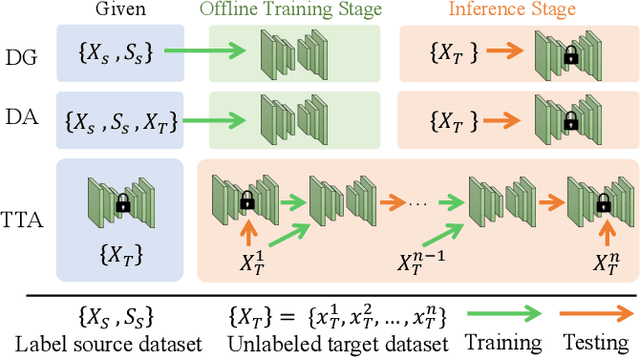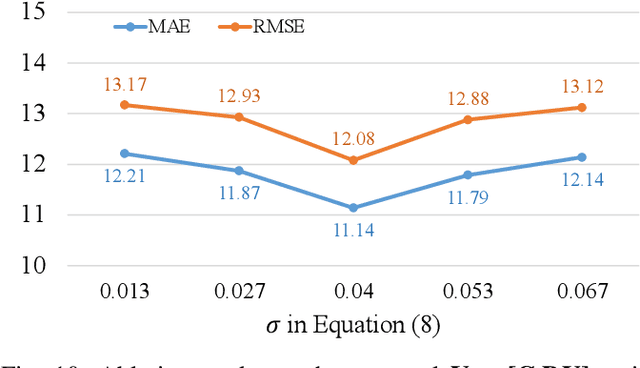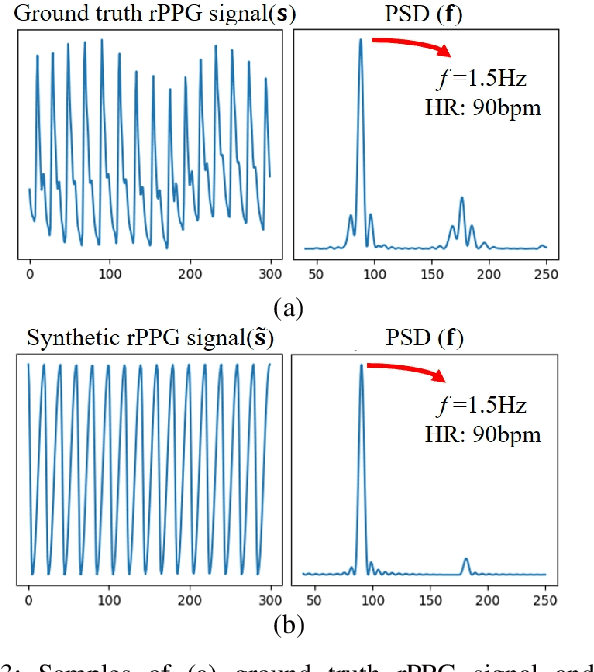Fully Test-Time rPPG Estimation via Synthetic Signal-Guided Feature Learning
Paper and Code
Jul 18, 2024



Many remote photoplethysmography (rPPG) estimation models have achieved promising performance on the training domain but often fail to measure the physiological signals or heart rates (HR) on test domains. Domain generalization (DG) or domain adaptation (DA) techniques are therefore adopted in the offline training stage to adapt the model to the unobserved or observed test domain by referring to all the available source domain data. However, in rPPG estimation problems, the adapted model usually confronts challenges of estimating target data with various domain information, such as different video capturing settings, individuals of different age ranges, or of different HR distributions. In contrast, Test-Time Adaptation (TTA), by online adapting to unlabeled target data without referring to any source data, enables the model to adaptively estimate rPPG signals of various unseen domains. In this paper, we first propose a novel TTA-rPPG benchmark, which encompasses various domain information and HR distributions, to simulate the challenges encountered in rPPG estimation. Next, we propose a novel synthetic signal-guided rPPG estimation framework with a two-fold purpose. First, we design an effective spectral-based entropy minimization to enforce the rPPG model to learn new target domain information. Second, we develop a synthetic signal-guided feature learning, by synthesizing pseudo rPPG signals as pseudo ground-truths to guide a conditional generator to generate latent rPPG features. The synthesized rPPG signals and the generated rPPG features are used to guide the rPPG model to broadly cover various HR distributions. Our extensive experiments on the TTA-rPPG benchmark show that the proposed method achieves superior performance and outperforms previous DG and DA methods across most protocols of the proposed TTA-rPPG benchmark.
 Add to Chrome
Add to Chrome Add to Firefox
Add to Firefox Add to Edge
Add to Edge